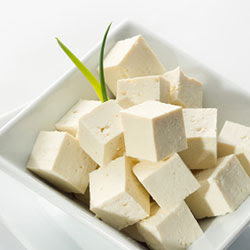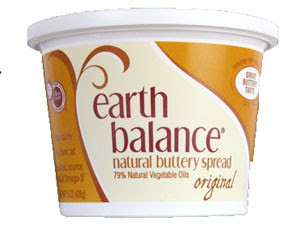Written By: Emily from The Vegan Home Chef
When I decided to be vegan, one of my first thoughts was, “Okay, which of my favorite foods do I never get to eat again?” Luckily, many of the things that make life nice on a day-to-day basis, like that morning coffee or glass of wine at the end of the night, are totally vegan. And if you won’t be able to live without the whip on top of your latte, there’s whipped cashew cream and commercially-produced vegan whipped creams to get you your fix.
There have been several products which have made life so much easier for me as a vegan, and the first and foremost is Earth Balance. It is by far the best butter substitute on the market, and it melts and cooks like butter, too. There are several varieties of the spread, including a soy-free version, and they also make a shortening for baking. I use it constantly.
Also extremely useful has been Better Than Milk, a powdered soy milk, which is wonderful for baking bread. Many recipes call for dry milk, so you can just substitute this. I absolutely believe that it makes for the richest, best tasting loaf of bread. I don’t ever buy sliced bread because my father is a frantic baker and is always turning out some new delicious vegan loaf, so as far as vegan bread brands, I’m afraid you’re on your own.
One further product I can’t cook without is unsweetened, full-fat coconut milk. It doesn’t taste like coconut, and it has the rich texture and heft of milk, so it is the hands-down best substitute I’ve found for cooking and baking. I prefer soy milk in coffee and over cereal and just to drink (chocolate soy milk is a special treat), but coconut milk is the only one I use to cook with. Rice milk and almond milk both have really particular properties that make them useful for certain purposes, so give them a try sometime if you don’t want to OD on soy.
Also, never fear: you don’t have to give up chocolate. There is no reason to resort to carob chips. Ghirardelli semi-sweet chips are vegan (as are many high-quality dark chocolates), and I’ve used them with great success in several recipes. If you are a honey fiend like me, agave nectar works beautifully as a substitute, though it is a bit less thick. Still, I don’t think that every vegan should necessarily give up honey. If you feel strongly that using the bees for food production is inherently wrong, then more power to you but I personally am very concerned about honeybee populations and live in an area with access to local, ethically produced honey on every corner, so I buy from small beekeepers who keep the bees healthy and out pollinating.
In my first year as a vegan, I’ve been cautioned by everyone from family members to friends, to near-strangers about a variety of perceived risks of my diet. The Big Two are protein and calcium, and, happily, neither of these is even remotely difficult to get without meat or dairy.
Protein is important, but not in the way that the meat-people think. According to the American Heart Association, most people eat more protein than they need, and the scientific community is beginning to report that this is having major health effects, even beyond those caused by the high fat content of many high-protein foods, including cardiovascular disease, strain on kidneys, and certain cancers. For most of us, getting enough protein isn’t an issue; getting quality protein is. Nuts, beans, lentils, whole grains, and many vegetables are great sources. Tempeh is very high in protein, and tofu is reasonably high as well. However, if you’re eating a varied and nutrient-rich diet, you shouldn’t ever have to worry about protein. Artichokes, collard greens and turnip greens, sesame seeds, tofu, and molasses are all really high in calcium, and many other vegetables, beans, fruits, nuts and seeds are as well. If you’re worried about your calcium intake,
just take a multivitamin, and eat your greens.
The only thing that is essential for vegans to supplement is B12, but most soy milks and other milk alternatives are enriched with B12 and other vitamins. You may hear that B12 is only found in meat and dairy, but that isn’t entirely true. B12 is synthesized by microbes in the soil (particularly around plant roots) and animals pick it up from eating produce that has been in contact with dirt. In the distant past, humans did the same thing, but now we wash and sanitize produce before consuming it, so we have to get this vitamin elsewhere.
Luckily, if you get really tired of being good, there are lots of vegan things that are terrible for you. Oreos are vegan, as are most potato chips, which are usually cooked in some kind of vegetable oil. French fries at restaurants are likely cooked in the same fryer as chicken fingers or popcorn shrimp, but it’s up to you to decide if that’s an issue.
Even without junk food, there are lots of vegan indulgences, though being vegan will likely encourage you to look at indulgence differently. You certainly don’t have to give up sugar, refined flours, or gluten, go raw, or anything like that. Many people who are vegan for health reasons or are just very health conscious choose to limit or eliminate processed sugars and flours. One reason for this, I suspect, is that if you are eating healthfully as a vegan, your body is “running cleaner” and you feel the effects of everything on your body more clearly. This is certainly something that I’ve experienced, for better or worse – I used to be able to drink gallons of coffee without feeling the effect, but now I have to treat my body better.

Photo Credit: IFoodTV
I would like to reassure you, too, that your life does not have to revolve around soy. I’ve been asked many times, “So, what do you eat, like, tofu?” You don’t have to eat tofu at every meal, or ever, if you don’t want to. There are lots of great tofu recipes out there, so do some experimenting, but ultimately it doesn’t have to own you. Every vegan cookbook seems to have a tofu scramble recipe (like scrambled eggs), and that is a very easy, very filling, often very delicious way to serve it. Marinating and baking tofu is the most common method, and obviously there is a ton of flexibility with the marinade, so you can do anything from a Latin mojo marinade (one of my favorites – in Terry Hope Romero’s Viva Vegan) to barbecue sauce. Mastering the marinating time and baking temperature has been a bit tricky for me, and I never seem to get to the exact texture I want, but you can fight that battle for yourself.
Far from being a burden, my veganism has been very freeing for me. If this is something you want to do or try, then the process of discovery is half the fun. Finding vegan options at your favorite restaurants, reading labels at the grocery store, and experimenting in the kitchen are all a part of the process of taking control of how you eat and how you take part in the food economy. If you choose to eat meat and dairy, you can do that consciously as well – just know where your food comes from, and make decisions that you feel good about. We are what we eat, sure, but in the global food economy we benefit from, the whole world is what we eat, and that gives us a lot of power.
Thanks for reading, and I hope I’ll see you soon over at The Vegan Home Chef!
